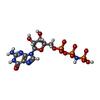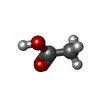+ Open data
Open data
- Basic information
Basic information
| Entry | Database: PDB / ID: 1jpn | ||||||
|---|---|---|---|---|---|---|---|
| Title | GMPPNP Complex of SRP GTPase NG Domain | ||||||
 Components Components | SIGNAL RECOGNITION PARTICLE PROTEIN | ||||||
 Keywords Keywords | SIGNALING PROTEIN / Ffh / SRP / GMPPNP / Signal Recognition Particle / SRP54 / NG domain | ||||||
| Function / homology |  Function and homology information Function and homology informationsignal recognition particle / signal-recognition-particle GTPase / 7S RNA binding / SRP-dependent cotranslational protein targeting to membrane / GTPase activity / GTP binding / ATP hydrolysis activity Similarity search - Function | ||||||
| Biological species |   Thermus aquaticus (bacteria) Thermus aquaticus (bacteria) | ||||||
| Method |  X-RAY DIFFRACTION / X-RAY DIFFRACTION /  SYNCHROTRON / SYNCHROTRON /  MOLECULAR REPLACEMENT / Resolution: 1.9 Å MOLECULAR REPLACEMENT / Resolution: 1.9 Å | ||||||
 Authors Authors | Padmanabhan, S. / Freymann, D.M. | ||||||
 Citation Citation |  Journal: Structure / Year: 2001 Journal: Structure / Year: 2001Title: The conformation of bound GMPPNP suggests a mechanism for gating the active site of the SRP GTPase. Authors: Padmanabhan, S. / Freymann, D.M. | ||||||
| History |
| ||||||
| Remark 99 | CLOSE CONTACTS THE NINETEEN WATER MOLECULES FLAGGED AS CLOSE CONTACTS (SEE REMARK 500) OCCUPY ...CLOSE CONTACTS THE NINETEEN WATER MOLECULES FLAGGED AS CLOSE CONTACTS (SEE REMARK 500) OCCUPY UNRESOLVED FEATURES OF THE ELECTRON DENSITY MAP THAT HAVE A CHARACTERISTIC "PEANUT" SHAPE. THEY MAY REPRESENT ALTERNATE SOLVENT POSITIONS OR AN UNCHARACTERIZED SOLVENT COMPONENT. |
- Structure visualization
Structure visualization
| Structure viewer | Molecule:  Molmil Molmil Jmol/JSmol Jmol/JSmol |
|---|
- Downloads & links
Downloads & links
- Download
Download
| PDBx/mmCIF format |  1jpn.cif.gz 1jpn.cif.gz | 138.9 KB | Display |  PDBx/mmCIF format PDBx/mmCIF format |
|---|---|---|---|---|
| PDB format |  pdb1jpn.ent.gz pdb1jpn.ent.gz | 107.1 KB | Display |  PDB format PDB format |
| PDBx/mmJSON format |  1jpn.json.gz 1jpn.json.gz | Tree view |  PDBx/mmJSON format PDBx/mmJSON format | |
| Others |  Other downloads Other downloads |
-Validation report
| Summary document |  1jpn_validation.pdf.gz 1jpn_validation.pdf.gz | 1 MB | Display |  wwPDB validaton report wwPDB validaton report |
|---|---|---|---|---|
| Full document |  1jpn_full_validation.pdf.gz 1jpn_full_validation.pdf.gz | 1.1 MB | Display | |
| Data in XML |  1jpn_validation.xml.gz 1jpn_validation.xml.gz | 15.2 KB | Display | |
| Data in CIF |  1jpn_validation.cif.gz 1jpn_validation.cif.gz | 23.5 KB | Display | |
| Arichive directory |  https://data.pdbj.org/pub/pdb/validation_reports/jp/1jpn https://data.pdbj.org/pub/pdb/validation_reports/jp/1jpn ftp://data.pdbj.org/pub/pdb/validation_reports/jp/1jpn ftp://data.pdbj.org/pub/pdb/validation_reports/jp/1jpn | HTTPS FTP |
-Related structure data
| Related structure data |  1jpjC 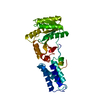 1ffhS C: citing same article ( S: Starting model for refinement |
|---|---|
| Similar structure data |
- Links
Links
- Assembly
Assembly
| Deposited unit | 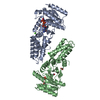
| ||||||||
|---|---|---|---|---|---|---|---|---|---|
| 1 | 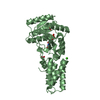
| ||||||||
| 2 | 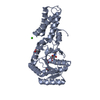
| ||||||||
| Unit cell |
|
- Components
Components
| #1: Protein | Mass: 32472.508 Da / Num. of mol.: 2 / Fragment: NG domain Source method: isolated from a genetically manipulated source Source: (gene. exp.)   Thermus aquaticus (bacteria) / Plasmid: pET3 / Species (production host): Escherichia coli / Production host: Thermus aquaticus (bacteria) / Plasmid: pET3 / Species (production host): Escherichia coli / Production host:  #2: Chemical | #3: Chemical | #4: Chemical | ChemComp-ACY / #5: Water | ChemComp-HOH / | |
|---|
-Experimental details
-Experiment
| Experiment | Method:  X-RAY DIFFRACTION / Number of used crystals: 1 X-RAY DIFFRACTION / Number of used crystals: 1 |
|---|
- Sample preparation
Sample preparation
| Crystal | Density Matthews: 2.24 Å3/Da / Density % sol: 45.17 % | ||||||||||||||||||||||||||||||||||||||||||
|---|---|---|---|---|---|---|---|---|---|---|---|---|---|---|---|---|---|---|---|---|---|---|---|---|---|---|---|---|---|---|---|---|---|---|---|---|---|---|---|---|---|---|---|
| Crystal grow | Temperature: 277.15 K / Method: vapor diffusion, sitting drop / pH: 4.6 Details: 29% MPD, 100 mM NaAc, 20mM CaCl2, pH 4.6, VAPOR DIFFUSION, SITTING DROP, temperature 277.15K | ||||||||||||||||||||||||||||||||||||||||||
| Crystal grow | *PLUS Temperature: 4 ℃ / Method: vapor diffusion | ||||||||||||||||||||||||||||||||||||||||||
| Components of the solutions | *PLUS
|
-Data collection
| Diffraction | Mean temperature: 100 K |
|---|---|
| Diffraction source | Source:  SYNCHROTRON / Site: SYNCHROTRON / Site:  APS APS  / Beamline: 5ID-B / Wavelength: 1 Å / Beamline: 5ID-B / Wavelength: 1 Å |
| Detector | Type: MARRESEARCH / Detector: CCD / Date: Nov 17, 1998 |
| Radiation | Protocol: SINGLE WAVELENGTH / Monochromatic (M) / Laue (L): M / Scattering type: x-ray |
| Radiation wavelength | Wavelength: 1 Å / Relative weight: 1 |
| Reflection | Resolution: 1.9→15 Å / Num. all: 45620 / Num. obs: 45606 / % possible obs: 100 % / Observed criterion σ(F): 0 / Observed criterion σ(I): -3 / Rmerge(I) obs: 0.051 / Rsym value: 0.051 |
| Reflection shell | Resolution: 1.9→1.94 Å / Rmerge(I) obs: 0.076 / Rsym value: 0.076 / % possible all: 100 |
- Processing
Processing
| Software |
| ||||||||||||||||
|---|---|---|---|---|---|---|---|---|---|---|---|---|---|---|---|---|---|
| Refinement | Method to determine structure:  MOLECULAR REPLACEMENT MOLECULAR REPLACEMENTStarting model: 1ffh Resolution: 1.9→15 Å / Isotropic thermal model: Isotropic / Cross valid method: THROUGHOUT / σ(F): 1 / Stereochemistry target values: Engh & Huber
| ||||||||||||||||
| Displacement parameters | Biso mean: 23.66 Å2 | ||||||||||||||||
| Refinement step | Cycle: LAST / Resolution: 1.9→15 Å
| ||||||||||||||||
| Refine LS restraints |
| ||||||||||||||||
| Software | *PLUS Name:  X-PLOR / Version: 3.851 / Classification: refinement X-PLOR / Version: 3.851 / Classification: refinement | ||||||||||||||||
| Refinement | *PLUS Num. reflection obs: 40885 / σ(F): 1 / % reflection Rfree: 8 % / Rfactor obs: 0.19 / Rfactor Rfree: 0.24 / Rfactor Rwork: 0.19 | ||||||||||||||||
| Solvent computation | *PLUS | ||||||||||||||||
| Displacement parameters | *PLUS |
 Movie
Movie Controller
Controller




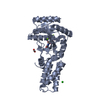

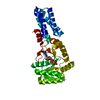

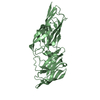
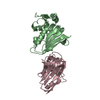



 PDBj
PDBj






